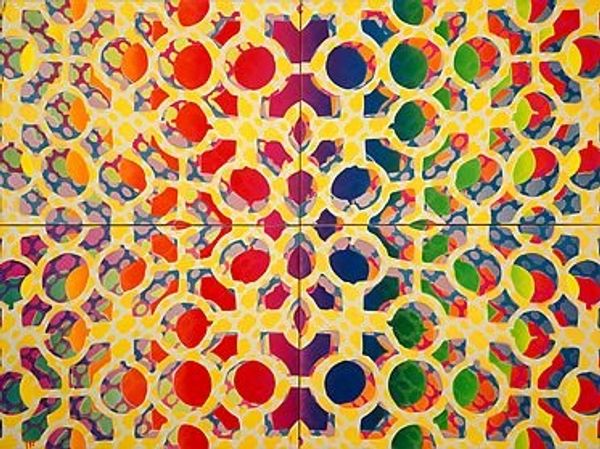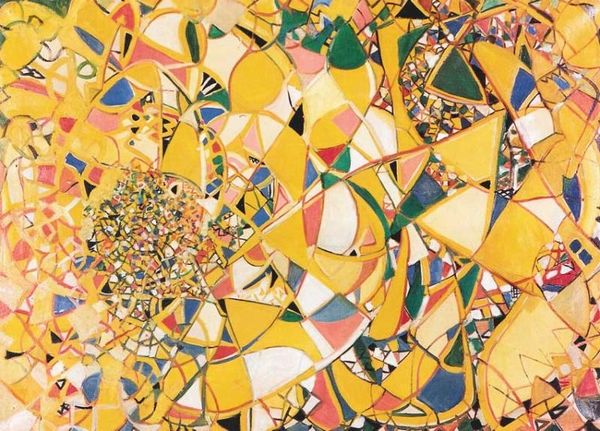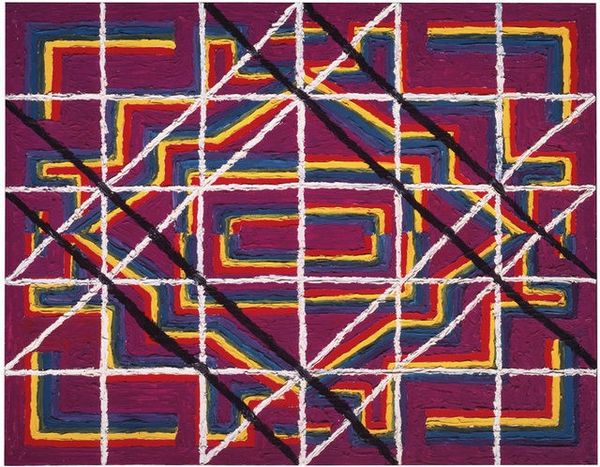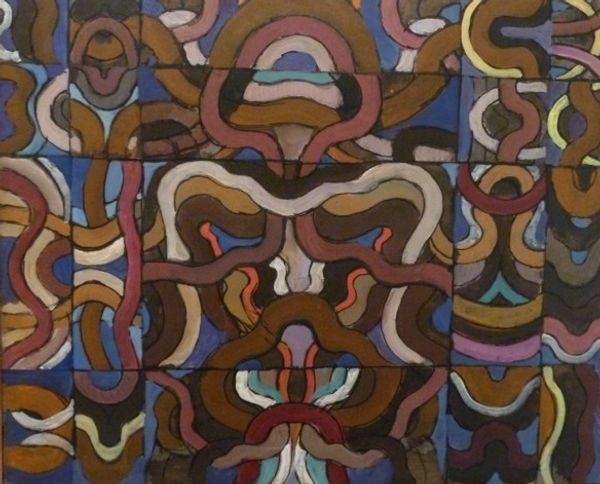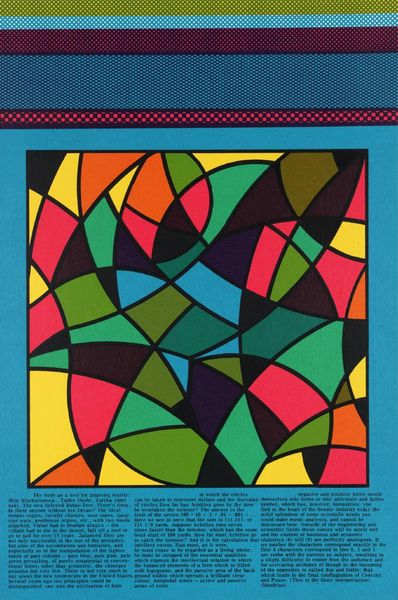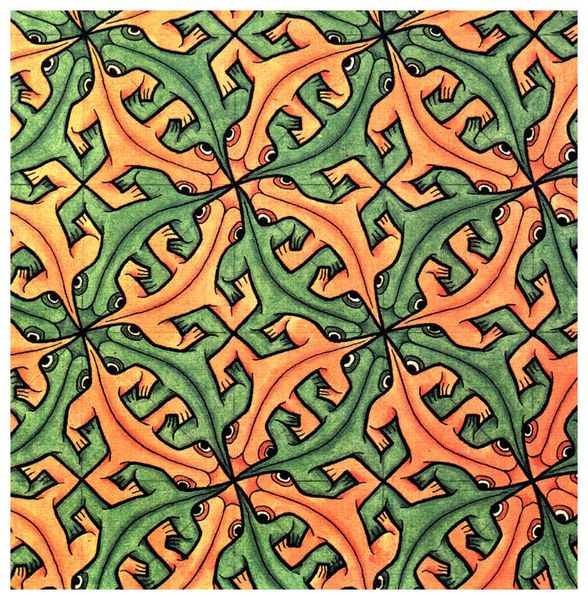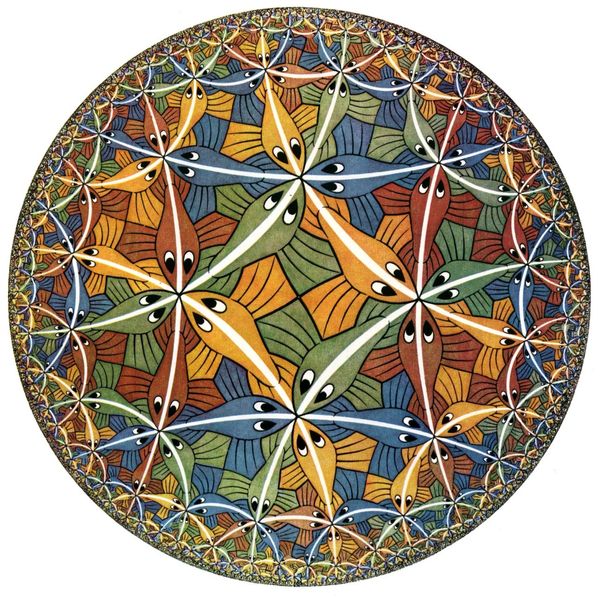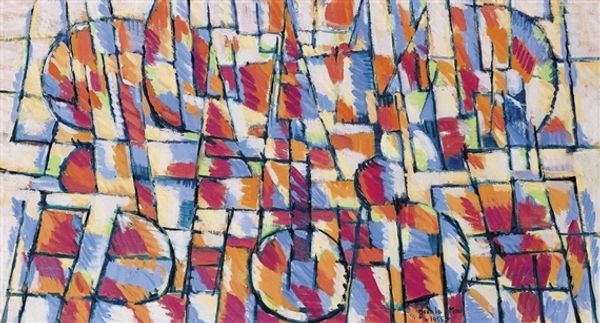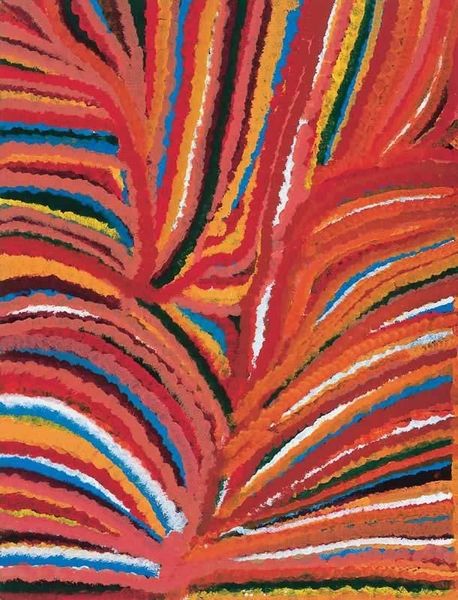
Copyright: M.C. Escher,Fair Use
Editor: This is M.C. Escher's "Gecko," a print from 1963. It's this vibrant, repeating pattern of colorful lizards. There's something playful but also very ordered about it. What is it about this print that resonates so much with viewers? Curator: What strikes me immediately is how Escher merges art and mathematics so seamlessly. It’s more than just a pattern; it’s a demonstration of tessellation, a concept with historical roots in architecture and decorative arts across cultures. Consider Islamic art's use of geometric patterns, for instance. Do you think this echoes something similar? Editor: Definitely. There's a similarity in the complex repetition and how the pattern itself becomes the subject. But Escher adds a representational element with the geckos. Curator: Exactly, and that representational element opens up a dialogue about the function of art in the mid-20th century. Was it meant to purely abstract, or could it engage with mathematical principles while retaining a connection to the natural world? Escher challenges the dominance of abstract expressionism by showing that figurative art could also be conceptually rigorous. It questions the assumed divide. Editor: I never thought about it in that way before, I was always wowed by the complex technical and visual elements. Curator: Escher was showing the possibilities when technical skill meets societal considerations. Think about the post-war embrace of logic and reason – was Escher's art a part of that, aesthetically reflecting this renewed order and sense of rational control after a period of immense global chaos? Editor: It's fascinating to see how a print of repeating lizards can spark such questions. Now I see that there is so much historical meaning that has defined how people look at geometric abstraction. Thank you for this illuminating dive. Curator: And thank you. Looking closely, it reveals connections far beyond the immediately apparent image and back into social history, which changes how one might see geometry and design.
Comments
No comments
Be the first to comment and join the conversation on the ultimate creative platform.
